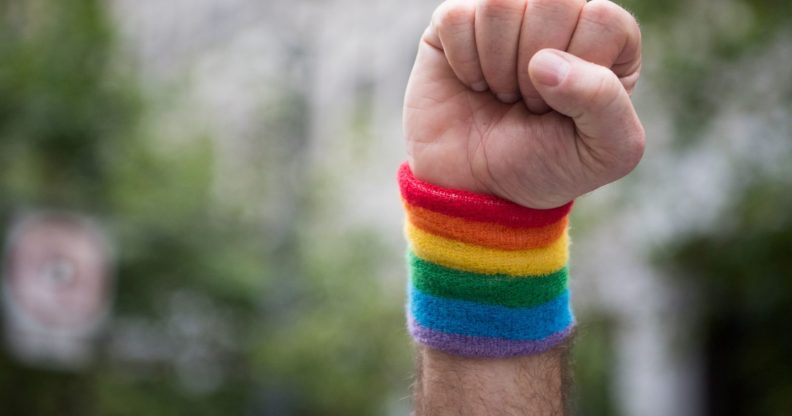What is LGBTQIAP2? The queer term which also includes pansexual, asexual, intersexual and two spirit

(Getty Images)
Most of us are aware that LGBT stands for lesbian, gay, bisexual and transgender – but for some, the term is gradually expanding to include other identities and orientations.
The term LGBTQIAP2 stands for lesbian, gay, bisexual, transgender, queer, intersex, asexual, pansexual and Two Spirit.
In the 1980s, the acronym LGBT arose after activist groups campaigned for an inclusive description for non-straight and transgender people.
Over time, it has grown to recognise and include other sexual and gender orientations. For some people, though, the grouping together of lots of identities can be problematic.
Eleanor Formby, an academic at Sheffield Hallam University has criticised the use of the word “community” to describe LGBT people, arguing it is not suitable “for such a diverse group.”
To understand exactly what LGBTQIAP2 means, let’s break it down.
What does the term “queer” mean?
In the past, the term “queer” was used pejoratively in reference to LGBT+ people as the word originally meant “strange” or “odd”, but the meaning has changed in recent years.
Stonewall’s glossary of terminology explains that the word has now been reclaimed by LGBT+ people who “do not identify with the traditional categories around gender identity and sexual orientation.”
The term queer is sometimes preferred as it is ambiguous, and although it is now widely recognised as the most inclusive word for our community, it may still be viewed as derogatory to some.

People hold up an asexual pride flag (Flickr/trollhare)
Intersex
Intersex is a term used to describe someone who may have the “biological attributes of both sexes” or “whose biological attributes do not fit with societal assumptions about what constitutes as male or female,” Stonewall explains.
Intersex people may identify as male, female or non-binary. According to the Office of the United Nations High Commissioner for Human Rights, between 0.05% and 1.7% of the population is born with intersex traits – which is around the same proportion of people who have red hair.
Asexual
Someone who is asexual does not experience sexual attraction. Unlike celibacy, which is a choice, asexuality is an intrinsic part of who an individual is.
The Asexual Visibility and Education Network (AVEN), which has more than 50,000 members worldwide, explains that asexual people have the same emotional needs as everybody else and are capable of forming intimate relationships.
AVEN points out that whether relationships are sexual or asexual, they contain the same important attributes such as communication, humour and closeness.
Pansexual
The term pansexual refers to a person whose emotional, romantic and/or sexual attraction towards others is not limited by sex, gender or gender identity.
Sometimes, the term pansexual is confused with the term bisexual – which refers to an emotional or sexual orientation towards more than one gender.
This is incorrect because pansexual attraction is transcendent of sex or gender, meaning sex and gender are not determining factors when it comes to attraction.

The Two Spirit contingent marches at San Francisco Pride 2014 (Wiki Commons)
Two Spirit
Two Spirit is a term used by some North American Indigenous societies to describe a person who embodies both a masculine and a feminine spirit.
It was coined at a conference in 1990 in Winnipeg, Canada, as a means of unifying the different gender identities and expressions of Native American, First Nations and Indigenous people.
In their book Queer Indigenous Studies: Critical Interventions in Theory, Politics, and Literature, the authors explain the term Two Spirit is used “to reference historical foundations of gender and sexual diversity in North American Indigenous societies” and “a contemporary interlinking of gender, sexuality, spirituality, and social roles.”
The University of Illinois explains that Two Spirit is a “culturally-situated identity and politics.”
Professor Brian Joseph Gilley, an assistant professor of anthropology at the University of Vermont and author of Becoming Two-Spirit: Gay Identity and Social Acceptance in Indian Country, told the New York Times the term for Two Spirit people is “different in each tribal language”.

